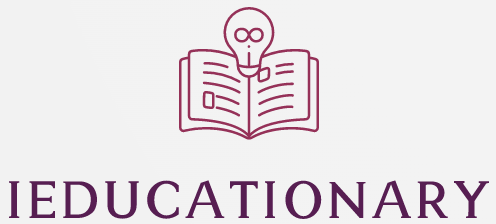Universal education was first implemented in England in 1870. In those days, factory work was unhygienic and men had to obey strangers’ orders. The conditions were horrible and people’s lives were turned upside down. Fortunately, industrialists led the charge in the adoption of universal education and the Elementary Education Act 1870. But why is it necessary? And what was the main motive for universal education? In this article, we will discuss some of the factors that prompted its creation.
Moral and humanitarian grounds
The human right to an education is an essential good. Without it, people cannot thrive and live their lives fully. Insufficient access to essential goods can jeopardize life interests and lead to serious illness or even death. Lack of access to educational opportunities can limit people’s participation in economic and political life. Insufficient access to education can also lead to poverty. So there are moral and humanitarian grounds for universal education. Let us examine these arguments and their implications.
Many of the world’s poorest children are excluded from education. In Sub-Saharan Africa, 32 million children are out of school, and 759 million people are illiterate. The situation is even worse in developing countries, where children often have less access to basic education. Further, many children from disadvantaged backgrounds are forced into the workforce in order to support their families. In many emerging countries, resources are not available to build schools, provide school materials, and recruit teachers.
Economic structure
Universal education began with the political needs of a fledgling nation. The country had many immigrants with diverse religious beliefs and cultures. Without a national culture, the country was fragmented. To meet these needs, many states mandated compulsory education from age five to sixteen. In 1930, less than twenty percent of Americans had completed high school. By 1990, more than twenty percent of the population had graduated from college.
However, educational expansion has faced numerous obstacles. The cost of universal primary and secondary education is a significant disincentive. In addition, competing demands for state resources often push education to the bottom of the list. Various barriers can slow the process of expanding access to high-quality education, such as political structure, corruption, poor information, and history. Some countries simply do not have the resources to invest in universal education.
Access to education
The right to education is one of the most important human rights and a fundamental building block for economic development. Education improves health, gender equality, and peace, and delivers substantial returns in terms of income and employment. Although major progress has been made in increasing access to and enrollment in school, many children and adolescents in the world remain out of school. More than half of all children and adolescents do not meet the basic proficiency standards in reading and mathematics.
The main motivation for universal education was the right of all people to an education, regardless of their background or nationality. The Universal Declaration of Human Rights was adopted in 1948, with the aim of providing access to quality education for all. Despite the broader goals for education, the United States continued to implement discriminatory policies in its early years. Since the mid-twentieth century, however, significant progress has been made.
Cost
The economic costs of out of school children vary greatly depending on the prevalence rate, ranging from 1% of GDP in Thailand to 10% in the Gambia. However, the economic benefits of providing primary education to all children in all countries are far greater. For instance, the projected cost of out of school children in Mali and Nigeria alone is equal to two years’ GDP growth. Similarly, the economic benefits of universal primary education are higher in developing countries, particularly those that are experiencing slower economic growth.
The UN’s Millennium Development Goals identified eight core areas of need for global development, including ensuring that all children complete primary education. Unfortunately, only two of these goals have been met. One non-profit organization, the Malala fund, estimates that it would cost US$526 billion to provide universal free education for all children for 12 years. Fortunately, the United States government has a $526 billion defense budget, which equates to nearly five years of free education.
Need for qualified teachers
Despite this goal, many countries are still facing teacher shortages. According to the United Nations, a total of 6.1 million more teachers are needed to meet the Millennium Development Goal of universal primary education by 2015. The majority of the shortage is found in sub-Saharan Africa, although the problem also exists in industrialized nations. In addition, the shortage is not only limited to developing countries, as a large number of teachers are retiring and re-entering the profession due to illness or career change.
The achievement gap is often exacerbated by inequitable teacher distribution. Studies have found that student learning is strongly related to teacher quality, which outweighs the effects of class size and heterogeneity. For example, students who are assigned to a large number of ineffective teachers experience significantly lower achievement gains compared to their peers with a few effective teachers. The differences can be as large as 50 percentile points over three years.
Impact of UDL
The Impact of Universal Education on the World Economy examines the debate over the role of public investment in education in low and lower-middle income countries. It draws evidence from both small-scale experiments and national programs. The report makes important messages for policymakers, while speaking to trade-offs. The authors are diverse and write each chapter themselves, but include an introduction that summarizes the major points of consensus among the contributions. The final chapter reviews the overall findings and conclusions of the report.
Global campaigners for education have argued that eliminating primary school fees, increasing government spending on education, and debt relief are necessary to achieve this goal. In the African continent, the African Network Campaign for Education for All builds the capacity of civil society, engages in national and international dialogues, and monitors the progress of Education for All targets. But it doesn’t stop there. Ultimately, it’s the collective action of all people who can make universal education a reality.

